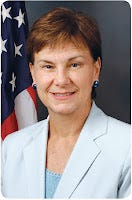FDA REBOOT!!

In nothing less than a remarkable presentation to the Brookings Institution yesterday, Janet Woodcock, Director of CDER at FDA, stated that the FDA will reboot its approach to antibacterial development. Rachel Sherman, the Associate Director for Medical Policy at FDA remarked that Dr. Woodcock had said to her FDA colleagues that she would not preside over the demise of antibiotics – not on her watch! With these words, the non-FDA audience in the room – and I suspect some of the FDA audience both in the room and on the phones – were flabbergasted. During the last 15 years of interacting with the agency, this was the most positive, even exhilarating set of statements I have ever heard regarding antibacterial development from the FDA. We have come a long way from the day when Bob Temple announced to a group from PhRMA back around 2000 that infectious diseases developers had been “getting away with murder for years.”

Dr. Woodcock, in her presentation, reviewed how we had arrived at this point. She emphasized the role of telethromycin (Ketek). Safety concerns on a drug with a controversial and complicated history that was finally approved led to demands for “more rigor” in the clinical investigation of antibiotics – specifically around the non-inferiority trials that are always used as pivotal studies to support marketing approval for these drugs. In their re-examination of non-inferiority trial designs, their search for justification for the margins used for these studies combined with concerns over the objectivity of the usual outcome measure – “cure” – led to tighter margins requiring higher patient numbers and new outcome measures. The new trial designs proposed in draft guidance were, mostly, simply infeasible.
In another surprising statement, Dr. Woodcock acknowledged in a way the loss of trust in the agency. She stated that this reboot would not affect the FDA’s current agreements with sponsors on the design of ongoing trials.
What does this proposed reboot look like? It is hard to say from the conversation during the daylong meeting. But it is clear that the agency wants to focus on areas of unmet need – those patients where current therapy is inadequate in terms of efficacy or where efficacy is at least questionable and where toxicity may be an important consideration (e.g. colistin). Dr. Woodcock mentioned the possibility of pathogen-specific studies instead of indication-specific ones. She agreed that for these patients a tradeoff in certainty around the data vs. potentially efficacious and less toxic therapy would be worthwhile. The words “historical controls,” “natural history studies,” “Bayesian designs” and “orphan drug status” were all used. Clearly, for these patients, everything is on the table for discussion.
At the same time, the FDA clearly would like to link these approvals with a label including a limitation of use. It is here that things get dicey since it is not clear that they would have the authority to actually enforce such a label. This, I think, is the basis of their desire for the LPAD legislation now being considered in Congress. On the other hand, if such a drug were approved for such a narrow indication that only a few patients would be treated with the drug, the high price and perhaps even the spectrum of the drug would automatically enforce restricted use. This could easily be confirmed through a use registry.
It also seemed to me that the agency was committing to reboot its entire approach to guidance for the more usual indications such as hospital acquired and community acquired pneumonia and others. The importance of this was emphasized by a number of other speakers during the meeting – notably Helen Boucher of the Infectious Diseases Society of America. To reboot industry, we need to have a way for all new antibiotics to get to the market – not just those that can treat very small populations of patients with specific types of resistant infections. We need an armamentarium of antibiotics for the future since resistance is hard to predict and many of our antibiotics have been around for a long time and resistance to most is already increasing.
As in all things in regulated industry – the devil is in the details. And the details need to be worked out BEFORE guidance is released this time. Towards that end, the FDA understands the need for competent external advice outside the usual advisory committee mechanism. Their approach to getting this advice should be to use small FDA teams equipped with specific questions meeting with small groups of advisors (the Brookings meeting was too large to really get anything concrete done) in a non-formal setting. The Brookings meeting was a good start to identifying the specific areas of inquiry.
For industry - For those companies planning to negotiate designs in Europe first – I think the FDA will be more open now. Consider a simultaneous advice session. In general, for those companies reconsidering antibiotic R&D – I believe that the US will be open for business – when I am not exactly sure. The water is at least warming – but its not summer yet.




